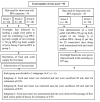The Effects of Short- and Long-Term Ingestion of Plastic Toxin Bisphenol A on Gastrointestinal Transit Time in Rats
- PMID: 38455775
- PMCID: PMC10918301
- DOI: 10.7759/cureus.53694
The Effects of Short- and Long-Term Ingestion of Plastic Toxin Bisphenol A on Gastrointestinal Transit Time in Rats
Abstract
Introduction Exposure to bisphenol A (BPA), a toxic chemical released from plastic, affects various body functions, including reproduction, metabolism, and development. The most common route of exposure to BPA is oral, and the gastrointestinal (GI) tract is, therefore, the first body system to be exposed to BPA. BPA has been well-documented to impair gut contractility in rats, in vitro. It may therefore be hypothesized that BPA may adversely affect GI motility and hence slow down the movement of food, resulting in the increased transit of food bolus in the GI tract. There are no reports so far on the effects of BPA on GI transit time. Objectives The present study was undertaken to examine the impact of exposure to BPA by a single oral dose (termed as short-term ingestion of BPA) and chronic (28-day) oral dose (termed as long-term ingestion of BPA) on the transit time of food bolus in the gut of adult male albino rats. Methods and materials The study was conducted in the Department of Physiology, Institute of Medical Sciences, Banaras Hindu University, Varanasi, Uttar Pradesh, India. In one set of experiments, each animal was fed a food pellet, once (short-term ingestion) containing BPA (2 µg/kg and 50 µg/kg in different groups), and in another set of experiments, each animal was fed a food pellet containing BPA (50 µg/kg/day) for 28 consecutive days (long-term ingestion). Control rats in both sets were fed food pellets without BPA. Subsequently, the gastric transit index (GTI), ileocecal transit index (ICTI), and colonic transit time (CTT) were determined by the standard charcoal marker method. Results One-time ingestion of a food pellet containing BPA caused a significant (p < 0.05) drop in the GTI and ICTI and an increase in the CTT with both doses of BPA (2 and 50 µg/kg). Similarly, after chronic (28-day), oral BPA exposure, a significant decrease in the GTI and ICTT and an increase in CTT were observed. Conclusion Both short-term (one-time) and long-term (28-day) oral exposure to BPA-containing food harmed GI transit. Slow GI transit may lead to metabolic disorders and GI motility disorders, such as constipation.
Keywords: bisphenol a; charcoal marker method; endocrine disrupting chemicals (edcs); gastrointestinal transit time; plastic chemical.
Copyright © 2024, Dixit et al.
Conflict of interest statement
The authors have declared that no competing interests exist.
Figures








Similar articles
-
Comparison of serum bisphenol A concentrations in mice exposed to bisphenol A through the diet versus oral bolus exposure.Environ Health Perspect. 2011 Sep;119(9):1260-5. doi: 10.1289/ehp.1003385. Epub 2011 Jun 6. Environ Health Perspect. 2011. PMID: 21642047 Free PMC article.
-
Risk Evaluation of Endocrine-Disrupting Chemicals: Effects of Developmental Exposure to Low Doses of Bisphenol A on Behavior and Physiology in Mice (Mus musculus).Dose Response. 2015 Oct 29;13(4):1559325815610760. doi: 10.1177/1559325815610760. eCollection 2015 Oct-Dec. Dose Response. 2015. PMID: 26740806 Free PMC article. Review.
-
Impact of oral bisphenol A at reference doses on intestinal barrier function and sex differences after perinatal exposure in rats.Proc Natl Acad Sci U S A. 2010 Jan 5;107(1):448-53. doi: 10.1073/pnas.0907697107. Epub 2009 Dec 14. Proc Natl Acad Sci U S A. 2010. PMID: 20018722 Free PMC article.
-
The Toxic Effects of Endocrine Disrupting Chemicals (EDCs) on Gut Microbiota: Bisphenol A (BPA) A Review.Endocr Metab Immune Disord Drug Targets. 2022 Aug 15;22(7):716-727. doi: 10.2174/1871530322666220325114045. Endocr Metab Immune Disord Drug Targets. 2022. PMID: 35339192 Review.
-
Modulation of folliculogenesis in adult laying chickens by bisphenol A and bisphenol S: Perspectives on ovarian morphology and gene expression.Reprod Toxicol. 2021 Aug;103:181-190. doi: 10.1016/j.reprotox.2021.06.010. Epub 2021 Jun 18. Reprod Toxicol. 2021. PMID: 34147626 Free PMC article.
References
LinkOut - more resources
Full Text Sources
